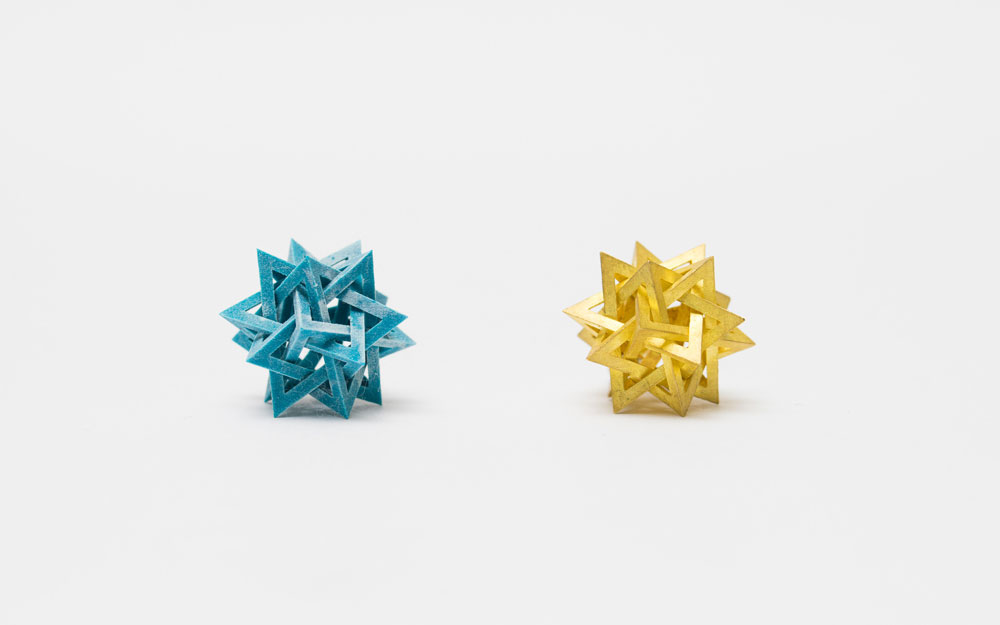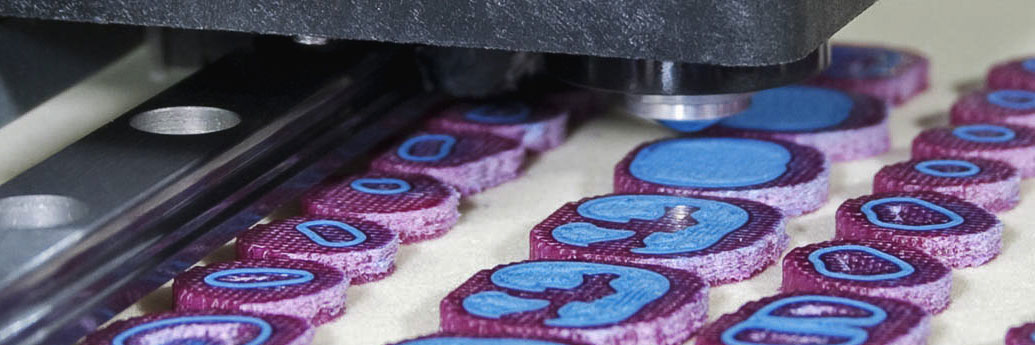The jewellery production sector has enthusiastically embraced 3D printing, revolutionising centuries-old practices. Many contemporary jewellers now leverage this technology to create intricate patterns for investment casting and producing jewellery directly. This blog explores the application of 3D printing in jewellery production, delving into prevalent technologies and materials while highlighting various limitations.
Rationale for 3D Printing:
Several merits underpin the utilisation of 3D printing in jewellery manufacturing:
- Complex designs: 3D printing transcends the constraints of traditional CNC machining, allowing for the creation of intricate designs that were previously unattainable through methods like wax carving.
- Efficiency: 3D printing facilitates the simultaneous production of multiple patterns within a short timeframe, significantly reducing lead times and costs compared to conventional techniques such as wax CNC and aluminium moulds.
- Cost competitiveness: The ability to produce multiple designs in a single print makes 3D printing economically viable for low production volumes, a crucial factor in the jewellery industry where customers often seek unique pieces

3D Printing Techniques:
Jewellery production through 3D printing primarily employs two methods: investment casting and direct printing.
Investment Casting
Among the widely adopted 3D printing methods for jewellery, investment casting stands out. This process involves an eight-step procedure:
|
1. Pattern formation: Traditionally done by casting wax in a metal mould, 3D printing enables direct printing of the pattern using wax or a castable resin. |
|
|
2. Mould assembly: The pattern is assembled onto a "casting tree," allowing for the casting of multiple parts simultaneously. Some 3D printing methods combine mould parts and the tree in a single step. |
|
|
3. Shell building: The assembly undergoes multiple submersions in slurry, forming a ceramic outer layer over the mould after drying. |
|
|
4. Burnout: The mould is placed in a furnace, melting the original wax/resin structure and creating a hollow negative mould. |
|
|
5. Pouring: The final casting material is poured into the mould, often using brass, and electroplated with precious metals during finishing. |
|
|
6. Knock off: Vibrating the mould removes the outer ceramic shell. |
|
|
7. Cut off: Individual cast items are separated from the mould tree. |
|
|
8. Finishing: Traditional jeweller finishing techniques are applied to the cast parts. |
|
Requirements for Successful 3D Printing:
For effective production of jewellery moulds for investment casting, 3D printing technology must meet specific criteria:
- High detail and intricate features.
- Complete elimination of the pattern material at the burnout/melt stage to avoid quality issues.
Based on these requirements, two suitable technologies for producing 3D printed patterns for investment casting are outlined:
SLA/DLP: These vat polymerisation techniques produce smooth, high-detail parts from castable resins with low remaining ash percentages after burnout.
|
Technology |
Material producer |
Material name |
|
SLA |
Formlabs |
Castable resin |
|
SLA |
3D Systems |
VisiJet SL Jewel |
|
SLA |
DWS |
DWS DC Series resins |
|
DLP |
Envisiontec |
PIC 100 C |
|
DLP |
B9 Creator |
B9R-4-Yellow Resin |
|
DLP |
Moonray |
Castable resin |

DOD: Drop-on-demand printing, a material jetting technique, deposits a wax-like material layer by layer, offering outstanding detail and dissolvable support for improved pattern surface finish.
- Dissolvable support resulting in less post-processing and a better pattern surface finish
- Patterns are printed with a wax-like material, meaning the pattern is melted rather than burnt out, eliminating the issues that arise with resin ash.
|
Technology |
Material producer |
Material name |
|
DOD |
Solidscape |
Solidscape Model and Support |


Direct Printing
An alternative method involves directly printing parts from metal powder, albeit less popular. More expensive than investment casting, this process requires extensive post-processing for an appropriate finish.
DMLS/SLM: Direct metal laser sintering or selective laser melting are powder fusion techniques for metal parts that require significant support during printing, leading to post-processing challenges.
|
Technology |
Material producer |
Material name |
|
DMLS |
Cookson Precious Metals |
ALNP000 18k 3N Yellow Gold Powder |
Limitations:
Feature Size
Fundamental limitations include restrictions on feature size, potential burnout issues, and resistance within the jewellery industry due to the perceived loss of the "handcrafted" touch.
Burn out remnants
A burnout that is too quick can cause the resin to expand and combust, damaging the surface of the investment and, in turn, the detail of the finished castings. A burnout that does not reach high enough temperatures can leave resin or ash inside the investment, affecting metal flow and the surface finish of your metal part.
Support removal
Support is critical for printers to accurately produce parts for all processes discussed in this article. While DOD technology uses dissolvable support, SLA and DMLS/SLM require the support to be removed manually. For these technologies, any surface that support is in contact with will require extra post-processing to achieve a smooth finish.
Loss of the handmade touch
There is some resistance in the jewellery-making industry towards adopting 3D printers as people feel it removes the “hand-crafted” aspect of the profession. Jewellery is often an intimate and personal product, and the manufacture of parts by a machine has seen several large jewellery manufacturers not embrace the technology.
 Jewellery produced via metal 3D printing still attached to the build plate and showing support material
Jewellery produced via metal 3D printing still attached to the build plate and showing support material
Rules of Thumb:
- SLA/DLP offers cost-effective jewellery pattern production with specific burnout procedures.
- DOD provides higher detail for investment casting but is more expensive.
- Direct printing of metal jewellery is the least common and expensive method, offering a shorter production chain with post-processing as the main requirement.
3D printing is a game-changing technology for the jewellery and wearables sector, revolutionising the way jewellery is designed and produced. With this technology allowing designers to create personalised, intricate and complex pieces quickly and effiecently, it's no wonder it's being leveraged in this sector.

















